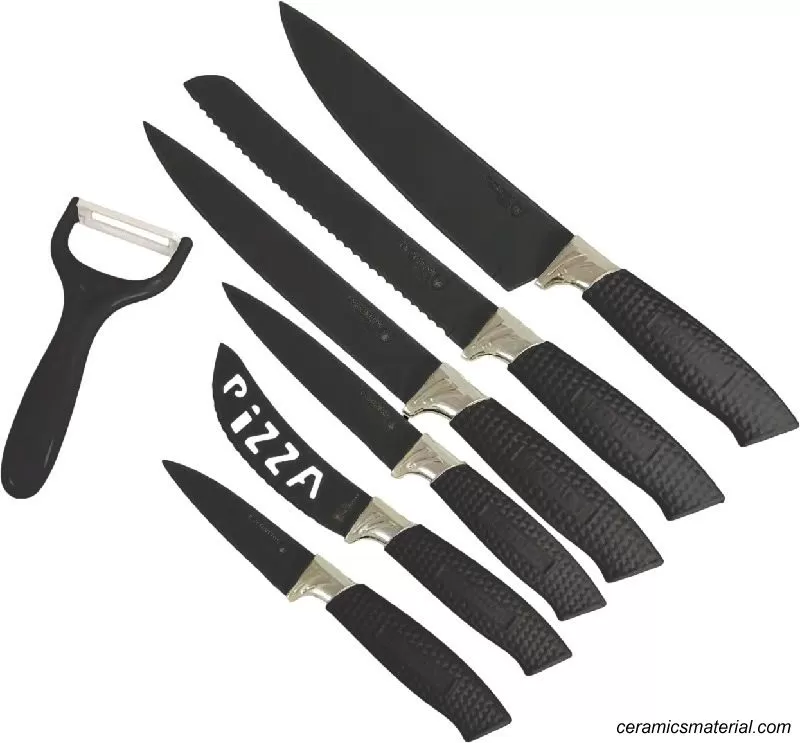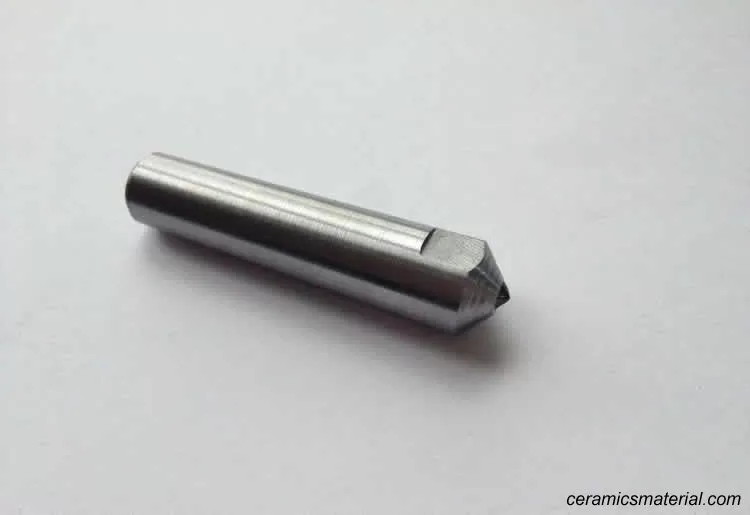Comparing precision ceramic cleavers, diamond knives, and metal knives, how to choose?
Knives are important auxiliary tools in our daily life and industrial production. Diamond cutters, precision ceramic riving knives and metal knives are three common tools used for cutting and processing materials. They each have their own advantages and application directions, and are different in material, use and performance. For example, diamond knives are known for their extremely high hardness and wear resistance, precision ceramic riving knives are known for their hardness and sharpness durability, and metal knives are the most common and traditional cutting tools. All three play important roles in their respective fields and are widely used in different industries and fields. This article takes ceramic riving knives as the main introduction object, and makes a comparative introduction to three types of cutting tools.
1. Introduction to precision ceramic splitting knife

A precision ceramic riving knife, often called a porcelain tip, is a precision microstructured ceramic component commonly used as the welding tip of a bonding machine. It is suitable for welding various electronic components, such as LEDs, IC chips, diodes, transistors, thyristors, surface acoustic wave and other circuits. Ceramic riving knife has high hardness, high specific gravity, fine grains, high product appearance, high dimensional accuracy, and good insulation properties. These characteristics make the ceramic riving knife a special cutting tool with an important position and application in the electronics industry and cutting processing fields.
(1) Material properties:
a. High hardness: Ceramic riving knife is made of high-hardness ceramic materials, such as alumina, boron nitride, etc. This allows them to cut and process a variety of hard materials such as tiles, stone, ceramics, etc.
b. Wear resistance: It has excellent wear resistance and can maintain sharp cutting edges for a long time, reducing tool wear and the need for frequent replacement.
c. Corrosion resistance: It has high tolerance to corrosive media and is suitable for cutting and processing in corrosive environments.
(2) Application fields:
a. Electronics industry: Ceramic riving knives are widely used in the electronics industry, especially in the fields of microelectronics assembly and welding. They are often used as welding needles for bonding machines and are used to weld electronic components such as LEDs, IC chips, diodes, transistors, thyristors, and surface acoustic waves.
For example: In the semiconductor industry, ceramic riving knives are used to cut silicon wafers or other semiconductor materials. It is usually made of high-purity ceramic materials with excellent hardness, rigidity and corrosion resistance. Application areas of ceramic riving knives in semiconductor manufacturing include:
• Silicon wafer dicing: Ceramic cleavers can be used to cut silicon wafers into appropriately sized chips for use in semiconductor device manufacturing.
• Semiconductor material cutting: In addition to silicon wafers, some other semiconductor materials also need to be cut, such as gallium nitride, etc. Ceramic cleavers provide precise cuts and high-quality cuts.
• Electronic component cutting: During the semiconductor chip manufacturing process, some electronic components need to be cut, and ceramic riving knives can be used for these tasks.
These ceramic riving knives provide precise cuts and high-quality sections to meet the precision machining requirements of the semiconductor industry.
b. Cutting and grinding processes: Due to the high hardness and wear resistance of ceramic riving knives, they are also widely used in cutting and grinding processes. For example, ceramic riving knives can be seen in tile and stone cutting, glass processing, ceramic parts manufacturing and other fields.
c. Other fields: Ceramic riving knife can also be used in other fields that require high hardness and high-precision cutting, such as medical device manufacturing, precision machining, etc.
(3) Advantages and features:
a. High-precision and smooth cutting: Ceramic riving knife has excellent dimensional accuracy and cutting quality, and can provide high-precision and smooth cutting surface to meet the requirements of precision machining.
b. Insulation performance: Since ceramic materials have good insulation properties, ceramic cleavers can provide good insulation protection in the electronics industry to avoid current leakage and damage to electronic components.
c. Long life and stability: Ceramic riving knife has a long service life, can maintain the sharpness and stability of the tool, and reduce the frequency of tool replacement and production downtime.
2. Commonalities and differences between diamond tools, ceramic riving knives and metal tools

Diamond cutting tools are world-famous for their extremely high hardness and wear resistance; metal cutting tools are the most common and traditional cutting tools, usually made of metal materials such as steel; ceramic riving knives usually use silicon nitride ceramics (Si3N4), Made of aluminum oxide (Al2O3), boron nitride (BN) and other materials.
The three have differences in material selection, hardness, sharpness and application range, and are suitable for different cutting needs and material processing.
Common characteristics:
a. They are all tools used for cutting and processing materials.
b. All have high hardness, can handle hard materials and provide a long service life.
c. All require proper use and maintenance based on different materials and applications.
The difference:
a.Material production:
The blades of diamond tools are mainly made of artificial or natural diamond crystals and have extremely high hardness.
The blade part of the ceramic cleaver is made of ceramic materials (such as silicon oxide ceramics, etc.).
Metal knives are usually made of metallic materials such as steel.
b. Hardness:
Diamond has a higher hardness and is more difficult to scratch or wear than ceramic and metallic materials. Due to their extremely high hardness, diamond tools can handle harder materials, such as gemstones, carbide, etc.
Ceramic cleavers are second in hardness and can handle generally hard materials. Metal cutting tools have relatively low hardness and cannot handle some very hard materials.
c. Sharpness:
Both diamond knives and ceramic riving knives stay sharp for a longer period of time because they are harder and less likely to wear out. In contrast, the edges of metal knives wear out relatively easily and require regular sharpening and maintenance.
d. Brittleness:
Diamond cutting tools and ceramic riving knives are both brittle and sensitive to excessive impact or lateral force, and are easily broken or damaged. Metal knives are relatively tougher and can better resist impacts and lateral forces.
e. Application scope:
Diamond cutting tools are mainly used for cutting and processing high-hardness materials, such as gem processing, stone processing, etc.
Ceramic splitting knives are suitable for cutting and splitting hard materials such as ceramic tiles, glass, and ceramics.
Metal knives are widely used for a variety of cutting tasks, including cutting metal, plastic, wood, etc., and are suitable for a variety of application scenarios due to their toughness and plasticity.
3. Conclusion
Diamond knives, precision ceramic riving knives and metal knives each have their own advantages and disadvantages for different cutting needs and material handling.
Due to their extremely high hardness and wear resistance, diamond tools perform well in processing ultra-hard materials and scenarios that require long-term and high-intensity work, but they are expensive.
Precision ceramic splitting knives have a certain degree of hardness and sharpness and are suitable for cutting general hard materials, but are highly brittle and sensitive to impact and lateral forces.
Metal cutting tools are low in cost and have a wide range of applications, but their hardness and wear resistance are relatively low.
Therefore, when selecting a tool, various factors should be considered to select the most suitable tool type based on specific cutting needs, material characteristics and budget.
Share the Comparing precision ceramic cleavers, diamond knives, and metal knives, how to choose?
Recent News
- Introduction to the manufacturing process and application ma...
- Introduction and application of 95 alumina precision ceramic...
- Introduction to the characteristics, processes, and applicat...
- Introduction and application of alumina precision ceramics...
- Diversified applications of precision ceramic materials: fro...
- Advantages of precision ceramic dispensing valves compared t...
- What are the advantages of precision ceramic valves compared...
- What precision components can be made from precision ceramic...

